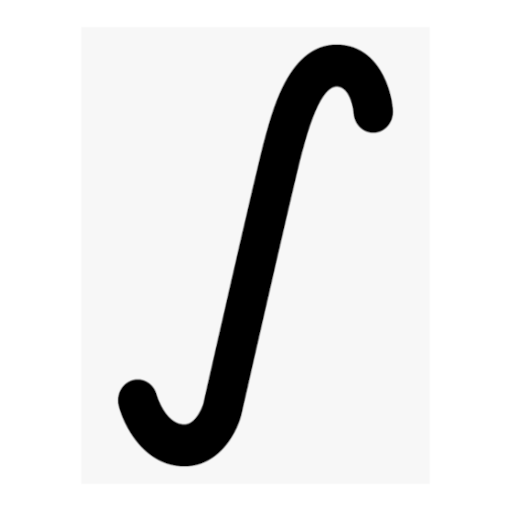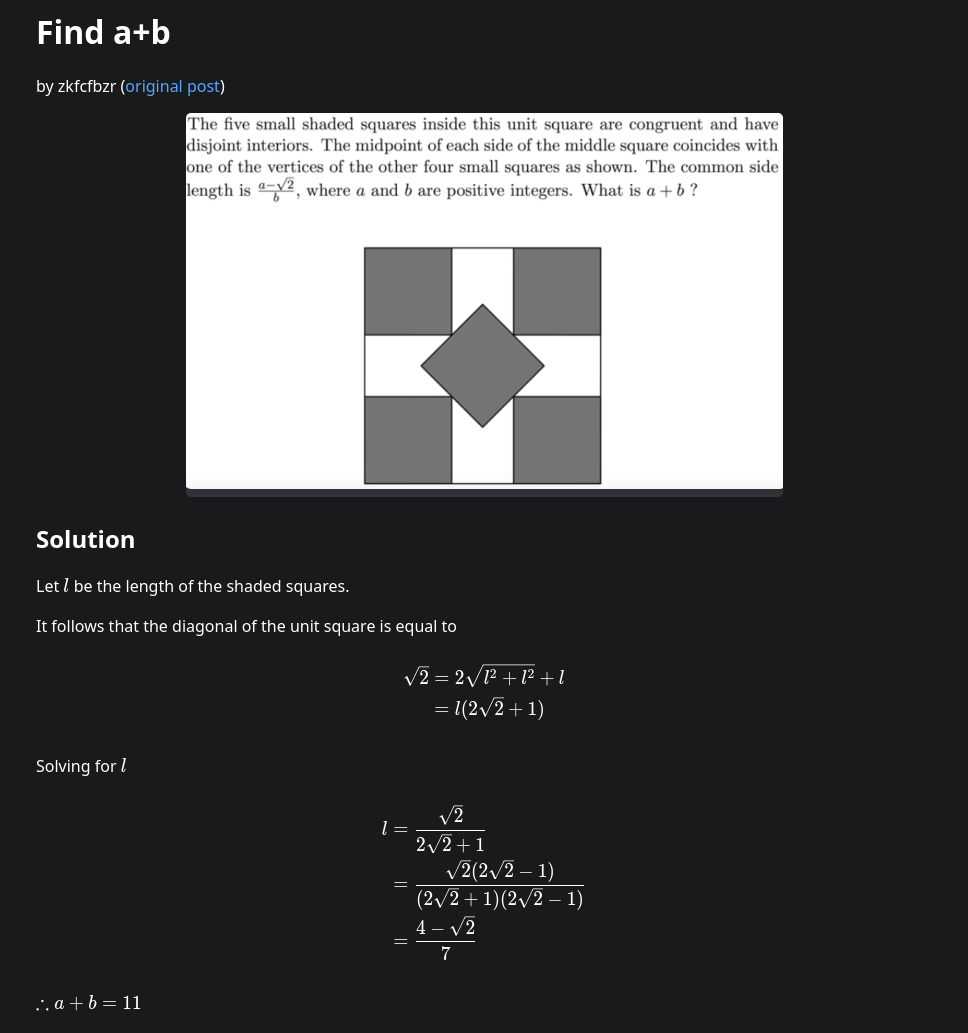
The image is of a large unit square with five smaller disjoint shaded squares contained entirely within it. The five smaller squares are congruent. Four of them are at each corner of the large square. The fifth is in the center, rotated diagonally, so the center of each of its sides is touched by the vertex from one of the other four squares. You are given that the common length for the five smaller congruent squares is (a-sqrt(2)) / b, where a and b are positive integers. What is the value of a + b?
All good 👍
spoilerish commentary
This is the short / simple solution I mentioned in my other comment. I think when I originally encountered this problem (well over a year ago) I tackled it by making an equation that added to 1, the side length of the unit square - but picking the diagonal makes everything work out far, far simpler.
Also, not sure if you care, but that link allows full access to everything in your drive.
holdup taking the side length of the unit square actually makes the working out a bit simpler, because the otherside is 1
idk i just saw the diagonal at first
2l+0.5 sqrt(2l^2)=1 l(2+0.5sqrt(2))=1 l=1/(2+0.5sqrt(2)) =(2-0.5sqrt(2))/3.5 =(4-sqrt(2))/7also, all the public items on the drive is mean to be public, there are unlisted and private items u dont see
Hey, you’re right. I’m not sure what I did originally to make it so complicated, then ¯\_(ツ)_/¯
Since the meat of the problem is in the proof, I’ll mention the value of a + b is:
a + b =
11
further commentary
There are probably a few ways to prove this. I’ll mention at least one of those ways is both simple and short, within the grasp of your typical sophomore in high school.
I don’t plan to make this into a regular series like siriussmart’s, but I might occasionally post problems I come across that seemed interesting.
hey would u like to create an index post? its just so that everything can be accessed within a few clicks from the listing post
u can follow the format
# Index of XXX |Date|Post|Difficulty| |---|---|---| |2024/04/28| [Sum to infinity is -1/12](https://lemmy.world/post/14877972)|7/10| ...its entirely optional and its up to u
I’ve got 3 or 4 other problems in mind that I might post at some point - I’ll make an index post with problem #2. Wanna keep them spaced out since I don’t have too many.
spoiler
square packing
deleted by creator




